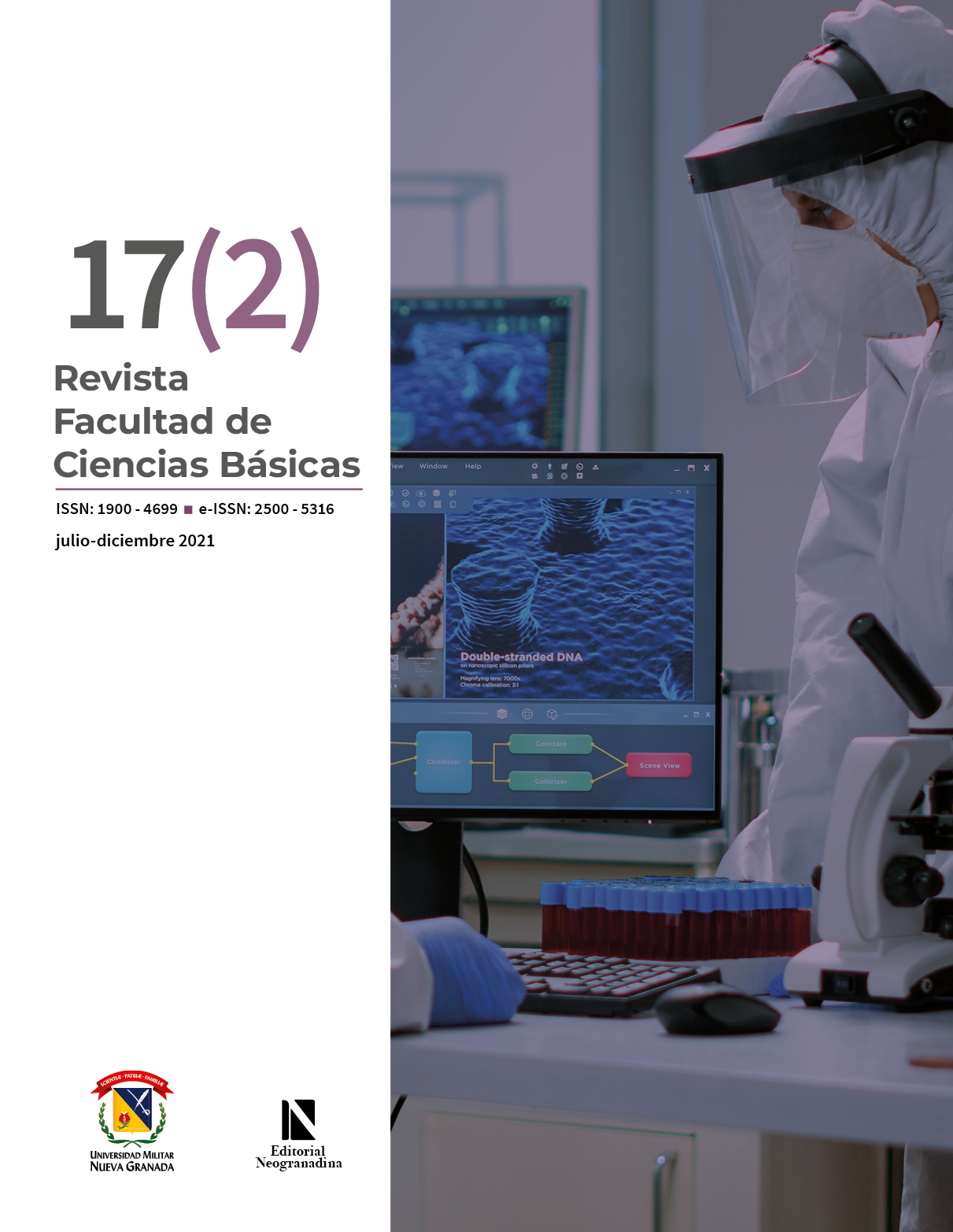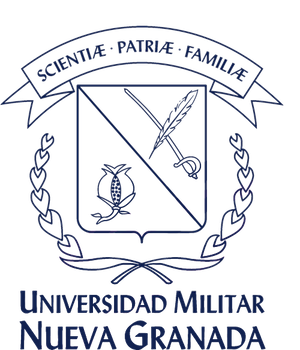Alleles -108C/T, L55M and Q192R of Paraoxonase 1 (PON 1) in a Population of the Colombian Coffee Region
Abstract
Abstract: Paraoxonase 1 (PON 1) is an enzyme integrated into high-density lipoproteins (HDL); its activity has been associated with the antioxidant effect of these lipoproteins. A reduced activity of these is associated with cardiovascular disease. The activity of the enzyme seems to depend on its polymorphisms (C-108T, L55M and Q192R), which makes them responsible for inter-individual and interethnic
variability. Objective: to genotypically characterize the PON 1 polymorphisms in the Colombian mestizo population. Methods: the frequencies of the alleles rs705379 (-108 C/T), rs 854560 (L55M) and rs 662 (Q192R) of the PON 1 gene were determined in 133 healthy adults, with mestizo traits, of non-consanguineous subjects of both sexes. Genotyping was done by mini-sequencing (SnaPshot).
Results: the frequencies of the polymorphic genotypes were: -108 C/T (CC 34%, CT 45%, TT 21%), L55M (LL 50%, LM 43%, MM 7%) and Q192R (QQ 42%, QR 50%, RR 8%). Six individuals (4.5%) had native triple homozygous haplotype (CC/CC/AA). Conclusion: the results indicate that in the population studied, the genotypic frequencies were not different from those described for other Latin American
and European populations. Furthermore, no strong link was observed between the three loci studied.
Downloads
References
M. Mackness and B. Mackness, “Human paraoxonase-1 (PON1): Gene structure and expression, promiscuous activities and multiple physiological roles,” Gene, vol. 567, no. 1, pp. 12–21, Aug. 2015.
A. Canales and F. J. Sánchez-Muniz, “Paraoxonasa, ¿algo más que una enzima?,” Med. Clin. (Barc)., vol. 121, no. 14, pp. 537–548, 2003.
Y. Huang et al., “form a functional ternary complex,” vol. 123, no. 9, 2013.
D. A. Chistiakov, A. A. Melnichenko, A. N. Orekhov, and Y. V. Bobryshev, “Paraoxonase and atherosclerosis-related cardiovascular diseases,” Biochimie, vol. 132, pp. 19–27, 2017.
X. Gu et al., “Identification of critical paraoxonase 1 residues involved in high density lipoprotein interaction,” J. Biol. Chem., vol. 291, no. 4, pp. 1890–1904, 2016.
C. Cervellati et al., “Paraoxonase, arylesterase and lactonase activities of paraoxonase-1 (PON1) in obese and severely obese women,”
Scand. J. Clin. Lab. Invest., vol. 78, no. 1–2, pp. 18–24, 2018.
J. Vekic et al., “Association of oxidative stress and PON1 with LDL and HDL particle size in middle-aged subjects,” Eur. J. Clin. Invest., vol. 37, no. 9, pp. 715–723, 2007.
M. C. G. Horacio Alberto Garda, Juan Domingo Toledo, L. V. C. Eduardo Daniel Prieto, Luz Ángela Cuellar, and C. M. A. Lucio Alfonso Chirillano, “Apolipoproteína A-I y lipoproteínas de alta densidad: Estructura y rol en la homeostasis del colesterol celular,” Bioquim. clínica, vol. 47, no. 2, pp. 327–41, 2013.
L. Calabresi, M. Gomaraschi, S. Simonelli, F. Bernini, and G. Franceschini, “HDL and atherosclerosis: Insights from inherited HDL disorders,” Biochim. Biophys. Acta - Mol. Cell Biol. Lipids, vol. 1851, no. 1, pp. 13–18, 2015.
Y. Huang et al., “Myeloperoxidase, paraoxonase-1, and HDL form a functional ternary complex,” Folia Neuropathol., vol. 123, no. 9, pp. 3815–3828, 2013.
D. S. Kim, J. Marsillach, C. E. Furlong, and G. P. Jarvik, “Pharmacogenetics of paraoxonase activity: elucidating the role of high-density lipoprotein in disease.,” Pharmacogenomics, vol. 14, no. 12, pp. 1495–515, 2013.
M. Mackness and B. Mackness, “Human paraoxonase-1 (PON1): Gene structure and expression, promiscuous activities and multiple physiological roles,” Gene, vol. 567, no. 1, pp. 12–21, 2015.
H. Berbe, “Paraoxonase 1 Activity , Polymorphism and Atherosclerosis Risk Factors in Patients Undergoing Coronary Artery Surgery,” pp. 1–12.
A. Otocka-kmiecik and M. Orłowska-majdak, “The role of genetic ( PON1 polymorphism ) and environmental factors , especially physical activity , in antioxidant function of paraoxonase * Udział czynników genetycznych ( polimorfizm PON1 ) i środowiskowych , a zwłaszcza aktywności fizycznej , w proces,” no. 502, pp. 668–677, 2009.
M. Roest, A. C. M. Jansen, A. Barendrecht, F. R. Leus, J. J. P. Kastelein, and H. A. M. Voorbij, “Variation at the paraoxonase gene locus contributes to carotid arterial wall thickness in subjects with familial hypercholesterolemia,” Clin. Biochem., vol. 38, no. 2, pp. 123–127, Feb. 2005.
I. Ahmad, R. Narang, A. Venkatraman, and N. Das, “Two- and three-locus haplotypes of the paraoxonase (PON1) gene are associated with coronary artery disease in Asian Indians,” Gene, vol. 506, no. 1, pp. 242–247, 2012.
N. Koubaa et al., “Association of homocysteine thiolactonase activity and PON1 polymorphisms with the severity of acute coronary syndrome,” Clin. Biochem., vol. 42, no. 9, pp. 771–776, Jun. 2009.
R. Chilton, “Paraoxonase ( PON ) -1 : a brief overview on genetics , structure , polymorphisms and clinical relevance,” pp. 137–143, 2018.
S. Chandrasekaran, P. Gopinath, and P. B. Dolia, “ASSOCIATED PHENOTYPE VARIATION IS ASSOCIATED WITH CORONARY ARTERY DISEASE,” Genomic Precis. Med., vol. 3, no. 79, pp. 4286–4292, 2016.
F. E. Murillo-González et al., “PON1 lactonase activity and its association with cardiovascular disease,” Clin. Chim. Acta, vol. 500, no. July 2019, pp. 47–53, 2020.
F. G. Santos et al., “The effect of the paraoxonase 1 (PON1) T(−107)C polymorphism on serum PON1 activity in women is dependent on fatty acid intake,” Nutr. Res., vol. 36, no. 1, pp. 9–15, Jan. 2016.
O. Fridman, A. Graciela-fuchs, R. Porcile, A. Verónica-morales, and L. Osvaldo-gariglio, “Paraoxonasa : sus múltiples funciones y regulación farmacológica,” Arch. Cardiol. México, vol. 81, no. 3, pp. 251–260, 2011.
F. E. M. González et al., “Biomarkers PON1 concentration and high-density lipoprotein characteristics as cardiovascular biomarkers,” Atheroscler. Dis., no. Cvd, 2019.
V. Bhatnagar et al., “Paraoxonase 1 (PON1) C/T-108 Association With Longitudinal Mean Arterial Blood Pressure,” Am. J. Hypertens., vol. 25, no. 11, pp. 1188–1194, 2012.
M. Kulka, “A review of paraoxonase 1 properties and diagnostic applications,” Pol. J. Vet. Sci., vol. 19, no. 1, pp. 225–232, 2016.
Y. Hernández-Díaz et al., “Effects of paraoxonase 1 gene polymorphisms on heart diseases: Systematic review and meta-analysis of 64 case-control studies.,” Medicine (Baltimore)., vol. 95, no. 44, p. e5298, 2016.
O. Rom and M. Aviram, “High-density lipoprotein-associated paraoxonase 1: a possible prognostic biomarker for heart failure?,” Eur. J. Heart Fail., vol. 19, no. 6, pp. 756–759, 2017.
N. Pérez-Herrera et al., “PON1Q192R polymorphism is associated with lipid profile in Mexican men with Mayan ascendancy,” Exp. Mol. Pathol., vol. 85, no. 2, pp. 129–134, Oct. 2008.
F. G. Santos et al., “The effect of the paraoxonase 1 (PON1) T(-107)C polymorphism on serum PON1 activity in women is dependent on fatty acid intake,” Nutr. Res., vol. 36, no. 1, pp. 9–15, 2016.
V. H. Brophy, R. L. Jampsa, J. B. Clendenning, L. A. McKinstry, G. P. Jarvik, and C. E. Furlong, “Effects of 5′ Regulatory-Region Polymorphisms on Paraoxonase-Gene (PON1) Expression,” Am. J. Hum. Genet., vol. 68, no. 6, pp. 1428–1436, Jun. 2001.
F. A. Abessolo, M. J. Bruno, M. A. N’Negue, M. Yangou, E. Ngou-Milama, and F. Ovono, “Enzymatic and genetic polymorphisms of paraox-onase-1 in the Gabonese population: The relation to lipid parameters in patients with diabetes,” J. Endocrinol. Metab. Diabetes South Africa, vol. 17, no. 2, pp. 92–99, 2012.
W. Phuntuwate, C. Suthisisang, B. Koanantakul, M. I. Mackness, and B. Mackness, “Paraoxonase 1 status in the Thai population,” J. Hum. Genet., vol. 50, no. 6, pp. 293–300, 2005.
I. Leviev and R. W. James, “Promoter polymorphisms of human paraoxonase PON1 gene and serum paraoxonase activities and concentrations.,” Arterioscler. Thromb. Vasc. Biol., vol. 20, no. 2, pp. 516–521, 2000.
N. Ferré et al., “Genetic association of paraoxonase-1 polymorphisms and chronic hepatitis C virus infection,” Clin. Chim. Acta, vol. 361, no. 1–2, pp. 206–210, 2005.
S. Singh et al., “Paraoxonase-1 genetic polymorphisms and susceptibility to DNA damage in workers occupationally exposed to organophosphate pesticides,” Toxicol. Appl. Pharmacol., vol. 252, no. 2, pp. 130–137, Apr. 2011.
C. O. Reichert, C. G. De Macedo, D. Levy, B. C. Sini, M. Gidlund, and P. Bydlowski, “PON-1 Activities in Patients with Sickle Cell Disease,” J. Mol. Biol., no. 4, pp. 1–13, 2019.
A. Bounafaa et al., “Association between Paraoxonase 1 (PON1) polymorphisms and the risk of acute coronary syndrome in a North African population,” PLoS One, vol. 10, no. 8, pp. 1–19, 2015.
F. Sepahvand, P. Rahimi-Moghaddam, M. Shafiei, S. M. Ghaffari, M. Rostam-Shirazi, and M. Mahmoudian, “Frequency of paraoxonase 192/55 polymorphism in an Iranian population,” J. Toxicol. Environ. Heal. - Part A Curr. Issues, vol. 70, no. 13, pp. 1125–1129, 2007.
M. Nus et al., “Arylesterase Activity and Antioxidant Status Depend on PON1-Q192R and PON1-L55M Polymorphisms in Subjects with Increased Risk of Cardiovascular Disease Consuming Walnut-Enriched Meat,” J. Nutr., vol. 137, no. 7, pp. 1783–1788, 2007.
H. Akkız et al., “Effect of PON1 gene polymorphisms in Turkish patients with hepatocellular carcinoma,” Meta Gene, vol. 1, pp. 93–101, Dec. 2013.
B. MacKness, M. I. MacKness, S. Arrol, W. Turkie, and P. N. Durrington, “Effect of the human serum paraoxonase 55 and 192 genetic polymorphisms on the protection by high density lipoprotein against low density lipoprotein oxidative modification,” FEBS Lett., vol. 423, no. 1, pp. 57–60, 1998.
F. Siller-López, S. Garzón-Castaño, M. E. Ramos-Márquez, and I. Hernández-Cañaveral, “Association of Paraoxonase-1 Q192R (rs662) Single Nucleotide Variation with Cardiovascular Risk in Coffee Harvesters of Central Colombia,” J. Toxicol., vol. 2017, 2017.
H. C. Miraval, A. C. Fernández, J. C. Estela, A. Zavaleta, V. Izaguirre, and E. C. Alva, “Actividad y fenotipos de paraoxonasa-I en una, población de estudiantes universitarios de Lima Perú,” Cienc. Invest., vol. 8, no. 1 SE-Artículos Originales, May 2014.
K. D. G. and S. S. Nidhi Gupta, “Paraoxonase 1 (PON1) Activity, Polymorphisms and Coronary Artery Disease,” Dis. Coron. Artery, vol. 1, 2018.
Y. Koda, H. Tachida, M. Soejima, O. Takenaka, and H. Kimura, “Population differences in DNA sequence variation and linkage disequilibrium at the PON1 gene,” Ann. Hum. Genet., vol. 68, no. 2, pp. 110–119, 2004.
A. E. Rojas-García, M. J. Solís-Heredia, B. Piña-Guzmán, L. Vega, L. López-Carrillo, and B. Quintanilla-Vega, “Genetic polymorphisms and activity of PON1 in a Mexican population,” Toxicol. Appl. Pharmacol., vol. 205, no. 3, pp. 282–289, 2005.
S. E. Hofer et al., “Association between PON 1 polymorphisms , PON activity and diabetes complications,” vol. 20, pp. 322–328, 2006.
S. Rastegar, R. Tavakoli, M. Khaledi, M. Zamani, A. Nouri, and M. Madmoli, “Evaluation association between PON1 Q192R gene plasma level Malondialdehyde in infertile man,” Med. Sci., vol. 23, no. 97, 2019.

Copyright (c) 2023 Revista Facultad de Ciencias Básicas

This work is licensed under a Creative Commons Attribution-NonCommercial-NoDerivatives 4.0 International License.











